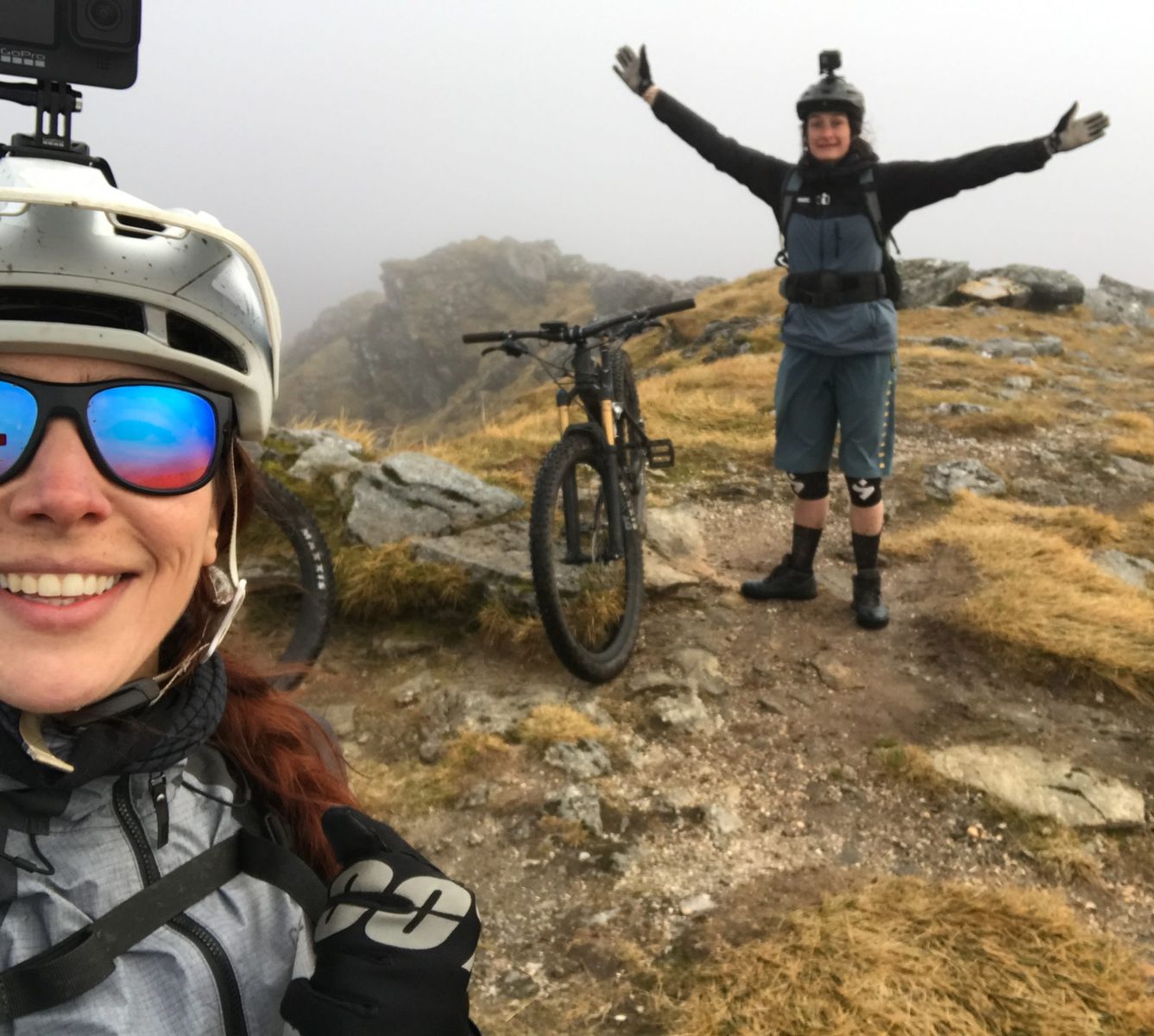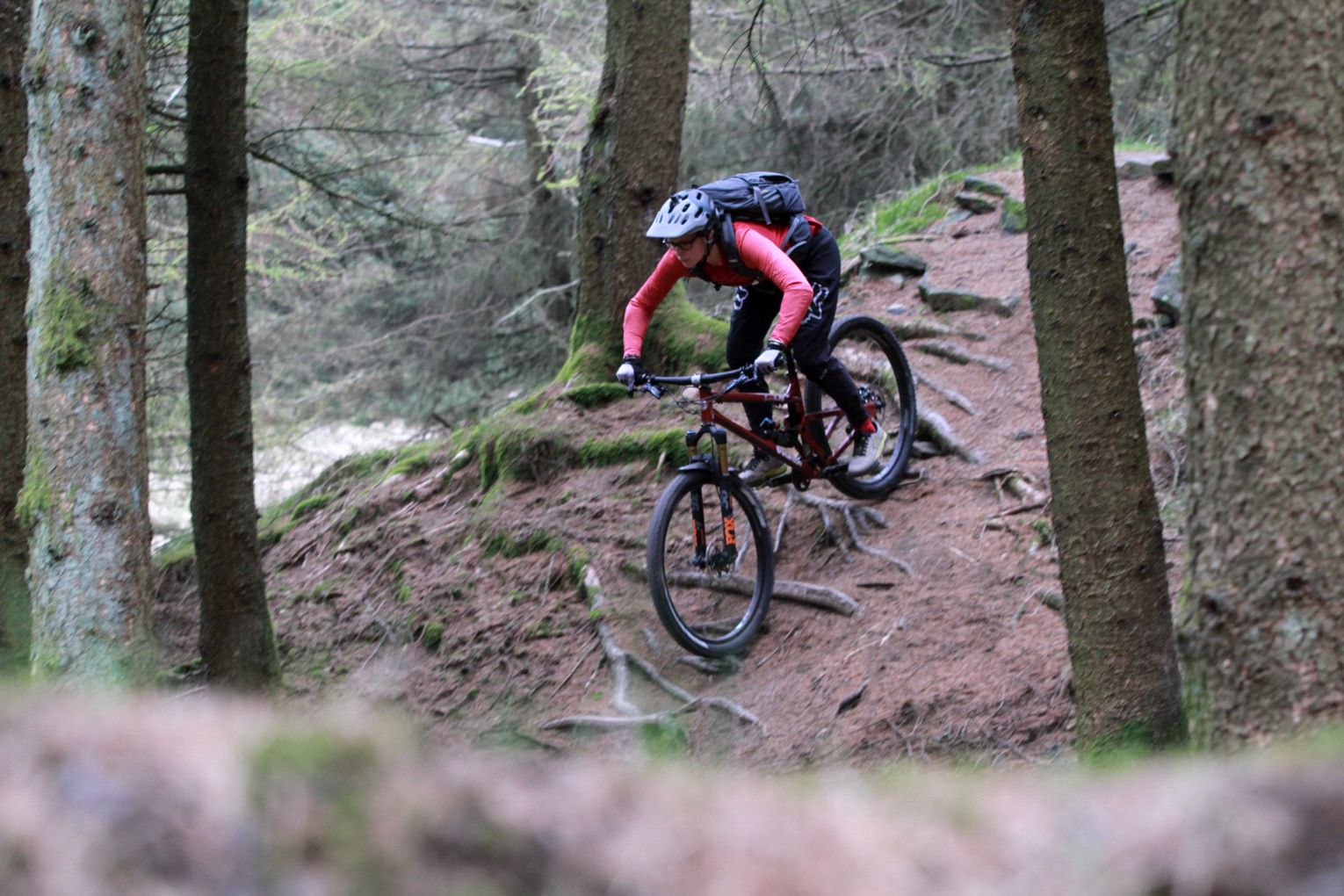Hormones, the ‘chemical messengers’ that tell our bodies what to do and when to do it, aren’t optional. We can’t turn them off, at most we can try to balance them with the use of more hormones. But can we use them to our advantage when it comes to riding bikes?

Some of you may wonder if or why this is relevant. Having spoken to women of a similar age to myself I have been surprised to learn that not everyone experiences huge changes to their body throughout the month. As someone with a hormone imbalance (PCOS) I am on the opposite end of the scale. My hormones can, if left to their own devices, control my life. And then there’s everyone in between, the women who are aware of the changes taking place, but maybe they don’t have such a controlling effect.

I’ve been in touch with Becs Toone, a MTB Physiologist from the English Institute of Sport, to try and gain a better understanding of the changes to our body throughout the hormone cycle. If we can pinpoint when we experience changes to our physical and mental state, surely we can adjust our riding schedule to suit our bodies needs and no longer suffer on certain parts of our menstrual cycle? Or are these changes to performance just a preconception?
What happens to your body both physically and mentally at each stage of your menstrual cycle?
Amanda: I want to explore all the changes that happen to us at each stage of the menstrual cycle, and what causes them. Spatial awareness, vertigo, confidence, varying energy levels, bad moods, dehydration and so on. If we have a better understanding of the physical effects on our body, can we make changes to our habits, diet, training to perform (or cope) better around the times when we might normally struggle. Can we use our menstrual cycle to our advantage by understanding when we are at our fittest or most confident?
Becs: The menstrual cycle is characterised by fluctuations in sex hormone such as estrogen and progesterone, which enable the cycle to be divided into 3 broad phases known as the early follicular phase, the ovulatory phase, and the mid-luteal phase. During the early follicular phase both estrogen and progesterone are low, while the ovulatory phase is characterised by high estrogen and low progesterone, before both estrogen and progesterone become elevated in the mid-luteal phase. As they move through the menstrual cycle, with these fluctuations in hormones women can experience a variety of physical, cognitive, emotional and mental changes and symptoms that could impact upon exercise performance.
Countdown to membership cut off for the next print issue of Singletrack World Magazine
A number of areas of athletic performance that could be impacted upon by these changes in hormone concentrations have been highlighted in the research. These range from cardiovascular and respiratory effects, to changes in neuromuscular parameters and energy substrate metabolism, as well as alterations in mood, emotion, balance, spatial awareness and decision making. However, studies involving measurement of sporting performance during different phases of the menstrual cycle are conflicting. Improved performance in cycling time trials, muscular strength, cognitive tasks, and levels of fatigue have been reported across all phases of the menstrual cycle, while other research has shown no difference in performance between the separate phases. As such, there is currently no consensus on the effects of the menstrual cycle on exercise performance, and no evidence-based guidelines related to managing training across the different phases of the menstrual cycle.

A contributing factor to this is likely to be the significant individual variation among women during the menstrual cycle. The duration of each of the phases, the concentrations and fluctuations in each of the hormones, as well as symptoms experienced due to those fluctuations during each phase varies between different individuals, and will likely change as an athlete matures and ages. For example, while 28 days is considered to be the average length of the menstrual cycle, only 13% of women actually have a cycle that is 28 days, and this can change throughout a woman’s life.
While evidence around the impact of the menstrual cycle on cycling performance is conflicting, the evidence around the impact of cycling on the menstrual cycle is more clear.
Can cycling affect our hormone levels?
Amanda: Overtraining, stress or pressure for those at competitive levels, diet. By focusing on cycling are we neglecting certain nutritional or physical needs? Are we increasing our testosterone levels by building up muscles for cycling, and if so, could this alter our menstrual cycle?
Becs: Anything the disturbs the equilibrium of the body can cause fluctuations in hormones. Cycling as a form of exercise, is a good example of this. The body will respond to any physical, mental, or emotional stress experienced in order to meet the demands of that stress, and survive. These changes can be both acute (the influence of a single event i.e. one training session), and chronic (the cumulative effect of a series of events i.e. a training programme).

In cyclists completing demanding training programmes that also includes racing, as well as dealing with the demands of every-day life, a high level of physical, mental and emotional stress can accumulate. Without appropriate recovery and nutrition built into this schedule, levels of hormones such as estrogen, progesterone and testosterone can decline or become disrupted, leading to changes in or the absence of a menstrual cycle. This is an indicator that the body is not able to tolerate and recover from the demands it is facing. Not only does can this negatively impact upon athletic performance in both training and competition, but is also detrimental to overall physical health and can lead to increases in injury and illness.
How do pro athletes work around their menstrual cycle?
Amanda: Are there ‘tricks of the trade’ that professional athletes use in order to be on top form at races?
Becs: In short, there are no tricks of the trade! Due to the myriad of effects hormone fluctuations of the menstrual cycle could have on an athlete, the key is to understand the individual. The most valuable thing an athlete can do is to map their own cycle, to try and understand when physical and mental and emotional changes and symptoms occur for them individually that impact upon them. It takes time to build up this data and identify patterns, but once you have done this it will enable you to identify trends and recognise where you may need to adjust training load, or training session content due to physical, emotional or cognitive changes or symptoms. For example, if you are an individual who experiences clumsiness during a specific phase of your menstrual cycle, you may want to avoid riding technical trails over the days when this is particularly bad, to avoid the risk of coming off and injuring yourself. Equally, if you suffer with fatigue or changes to your sleep during a phase of your cycle, you may want to build easier days into your training schedule during that time.
The information Becs has shared leads me to so many more questions. Questions that I have asked, and in due course will share with you all. Hormone cycles is an open-ended subject, so breaking it down into key areas will hopefully make it easier to digest, and help people find that part relevant to them.
At this stage, it would be interesting to know what questions you have on the subject. Take the opportunity to ask an expert in this field (no, not me! I’ll be speaking to Becs Toone and others) by filling in the form below:
Singletrack Merch
Singletrack Sponsored Features
Featured Premier Partner
Join our mailing list to receive Singletrack editorial wisdom directly in your inbox.
Each newsletter is headed up by an exclusive editorial from our team and includes stories and news you don’t want to miss.







interesting reading. Thanks Singletrack!
Fascinating!